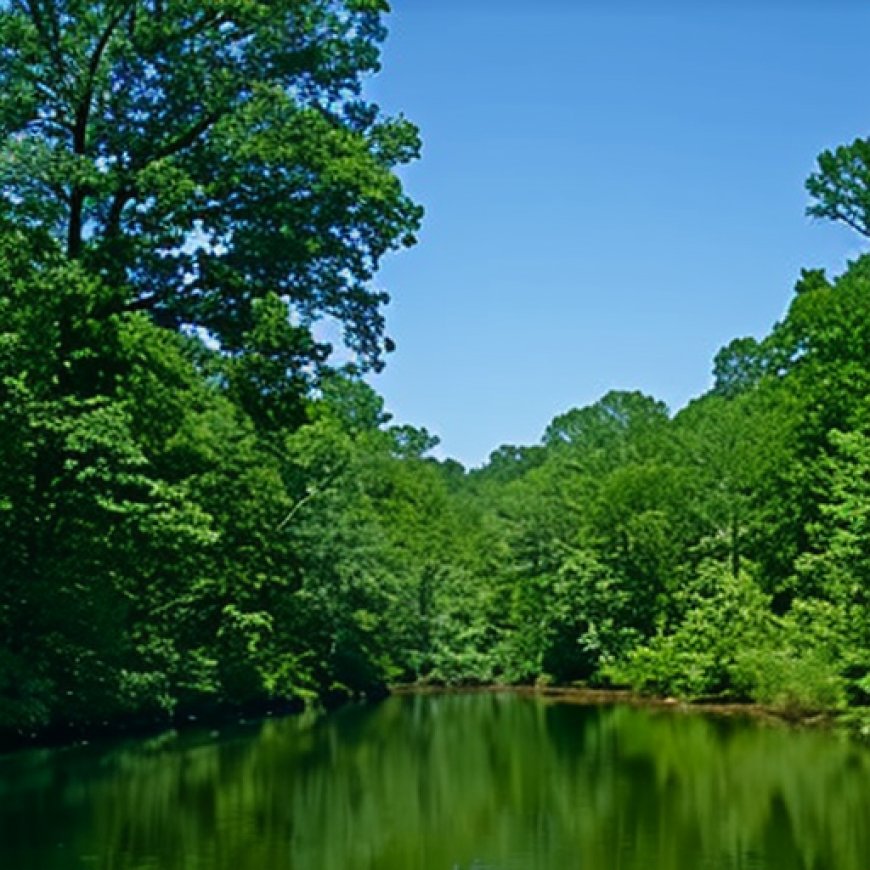Hoosier National Forest officials find no negative impacts with Houston South plan
Controversial Hoosier National Forest management plan moves forward IndyStar


Management Project in Hoosier National Forest
A management project in Hoosier National Forest is moving forward after forestry officials found that the proposed logging and controlled burns would have no significant impact on Lake Monroe. Lake Monroe is a drinking water source for more than 145,000 people.
The U.S. Forestry Service’s Houston South Management Plan
The U.S. Forestry Service’s Houston South management plan aims to revitalize forest health by reducing stressors. The plan includes harvesting about 4,300 acres of pine and hardwood trees and implementing a prescribed fire regimen on 13,500 acres over a decade or more. Some concerns have been raised about the potential sediment movement into the lake.
Measures to Prevent Soil Erosion
Chris Thornton, district ranger of the Hoosier National Forest, stated during a news conference that the Houston South plan includes measures to prevent soil erosion from reaching the watershed. The plan calls for seeding, mats, water bars, silt fencing, and reinforced stream crossings to stop soil from reaching waterways.
Opposition to the Hoosier National Forest Project
The Indiana Forest Alliance, Monroe County Board of Commissioners, Hoosier Environmental Council, and Friends of Lake Monroe filed a lawsuit in January 2023, claiming that the project would degrade Lake Monroe’s water quality. Friends of Lake Monroe released a report in 2022 highlighting the area’s susceptibility to erosion and the potential deterioration of water quality.
Measures to Monitor Water Quality
The U.S. Forestry Service plans to use four monitoring stations downstream of the work area to assess any changes in water quality due to the project. These monitoring stations have been in operation for several years to establish pre-project conditions.
Next Steps for Houston South
The latest report initiates a 45-day objection period for the project. Individuals and organizations who previously submitted public comments on the project may raise objections based on their previous comments. Objections can be sent via mail, fax, or email.
SDGs, Targets, and Indicators
-
SDG 6: Clean Water and Sanitation
- Target 6.3: By 2030, improve water quality by reducing pollution, eliminating dumping and minimizing release of hazardous chemicals and materials.
- Indicator: Water quality monitoring stations downstream of the work area to assess changes in water quality due to the project.
-
SDG 15: Life on Land
- Target 15.2: By 2020, promote the implementation of sustainable management of all types of forests, halt deforestation, restore degraded forests, and substantially increase afforestation and reforestation globally.
- Indicator: Harvesting of 4,300 acres of pine and hardwood trees in Hoosier National Forest as part of the management plan.
Table: SDGs, Targets, and Indicators
| SDGs | Targets | Indicators |
|---|---|---|
| SDG 6: Clean Water and Sanitation | Target 6.3: By 2030, improve water quality by reducing pollution, eliminating dumping and minimizing release of hazardous chemicals and materials. | Water quality monitoring stations downstream of the work area to assess changes in water quality due to the project. |
| SDG 15: Life on Land | Target 15.2: By 2020, promote the implementation of sustainable management of all types of forests, halt deforestation, restore degraded forests, and substantially increase afforestation and reforestation globally. | Harvesting of 4,300 acres of pine and hardwood trees in Hoosier National Forest as part of the management plan. |
Analysis
The article addresses two Sustainable Development Goals (SDGs) that are connected to the issues highlighted:
SDG 6: Clean Water and Sanitation
The article discusses the concerns raised by various organizations about the potential degradation of Lake Monroe’s water quality due to the proposed logging and controlled burns in Hoosier National Forest. This aligns with SDG 6, which aims to ensure clean water and sanitation for all. The specific target under this SDG that can be identified is Target 6.3, which focuses on improving water quality by reducing pollution and minimizing the release of hazardous chemicals and materials. The article mentions that water quality monitoring stations downstream of the work area will be used to assess changes in water quality due to the project, indicating an indicator for measuring progress towards this target.
SDG 15: Life on Land
The article discusses the management plan for Hoosier National Forest, which includes the harvesting of 4,300 acres of pine and hardwood trees. This aligns with SDG 15, which aims to protect, restore, and promote sustainable use of terrestrial ecosystems. The specific target under this SDG that can be identified is Target 15.2, which focuses on promoting sustainable management of forests and halting deforestation. The harvesting of trees in the forest can be seen as a step towards sustainable forest management. This serves as an indicator for progress towards this target.
Copyright: Dive into this article, curated with care by SDG Investors Inc. Our advanced AI technology searches through vast amounts of data to spotlight how we are all moving forward with the Sustainable Development Goals. While we own the rights to this content, we invite you to share it to help spread knowledge and spark action on the SDGs.
Fuente: indystar.com

Join us, as fellow seekers of change, on a transformative journey at https://sdgtalks.ai/welcome, where you can become a member and actively contribute to shaping a brighter future.







